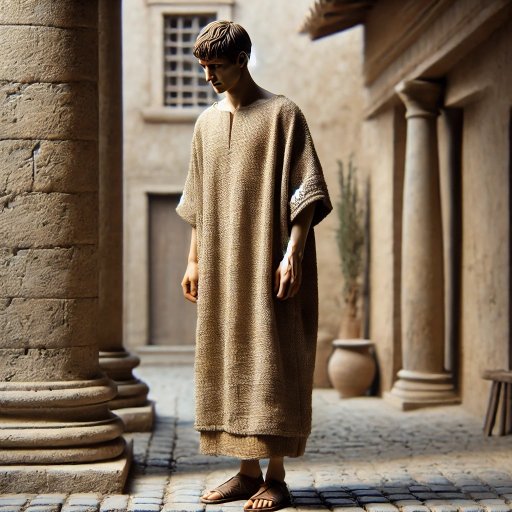Ancient Roman Clothing: Styles, Social Significance, and Fascinating Facts
Updated on: 01 December 2024Reading time: 3 minutes
Ancient Roman clothing was vastly different from modern attire. Romans did not wear sweaters, shirts, or trousers; instead, they donned togas and tunics. The tunica was a rectangular garment pinned at the shoulders and sewn along the edges to form a tubular shape. It served as the basic garment for both men and women, typically worn under a toga.
The toga, made of thick wool, was a long piece of cloth wrapped around the body, usually measuring about 6 meters (20 feet) in length. This garment originated with the Etruscans and was introduced to Rome by Numa Pompilius, the second king of Rome. Footwear consisted of sandals called sandalia and shoes known as calcei.
Just like today, Roman clothing styles differed between men and women. Men typically wore a tunic or a toga, while women wore a stola, a dress-like garment worn over a tunic. Over the stola, women often added a palla, a shawl-like accessory that sometimes included a hood. Women's stolae were often adorned with various decorative elements. Men commonly wore sandals, while women favoured closed shoes. Women’s clothing and footwear were typically bright and colourful, adding an element of vibrancy to their appearance.

|

|
Ancient Roman Clothing Distinguished Social Classes
Roman clothing also served to signify social class distinctions. For example, plebeians typically wore dark tunics made of inexpensive materials, such as coarse wool or felt. In contrast, patricians dressed in white tunics crafted from fine linen, expensive wool, or even rare silk. Footwear further highlighted social status; patricians often wore luxurious red sandals with ornamental designs or red shoes called calcei mullei. In comparison, plebeians wore simple, often worn-out leather sandals.
Specific garments were also designated for senators and magistrates. Senators wore tunics with purple stripes, known as tunica laticlavia, reflecting the high cost and exclusivity of purple dye. Magistrates, on the other hand, wore the tunica angusticlavia, which featured narrower stripes. Generals celebrating triumphs donned the toga palmata, a richly decorated toga with a gold border, while emperors distinguished themselves by wearing the trabea, an entirely purple toga.

symbolizing his high status. |
Fascinating Facts About Roman Clothing
|
